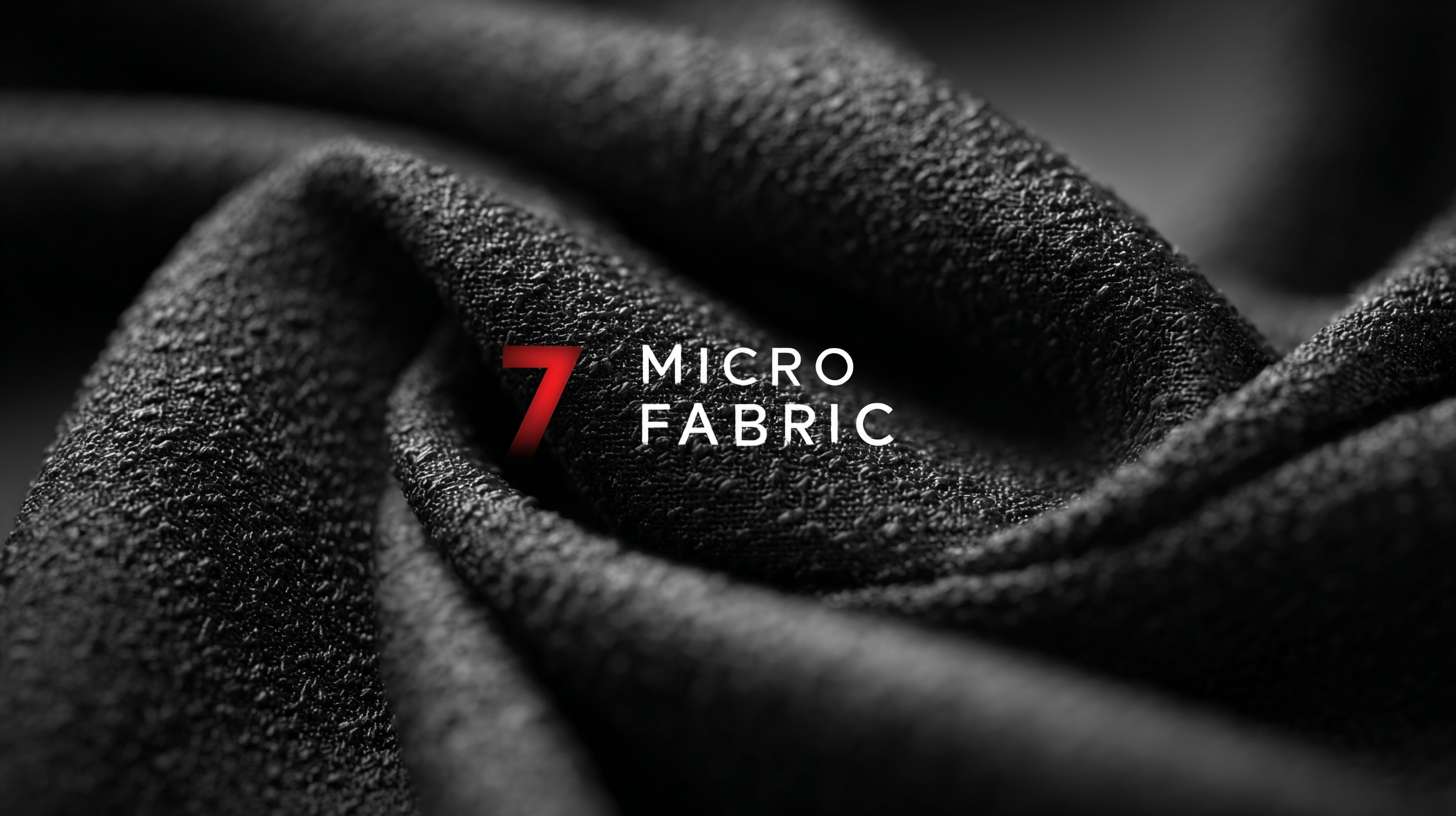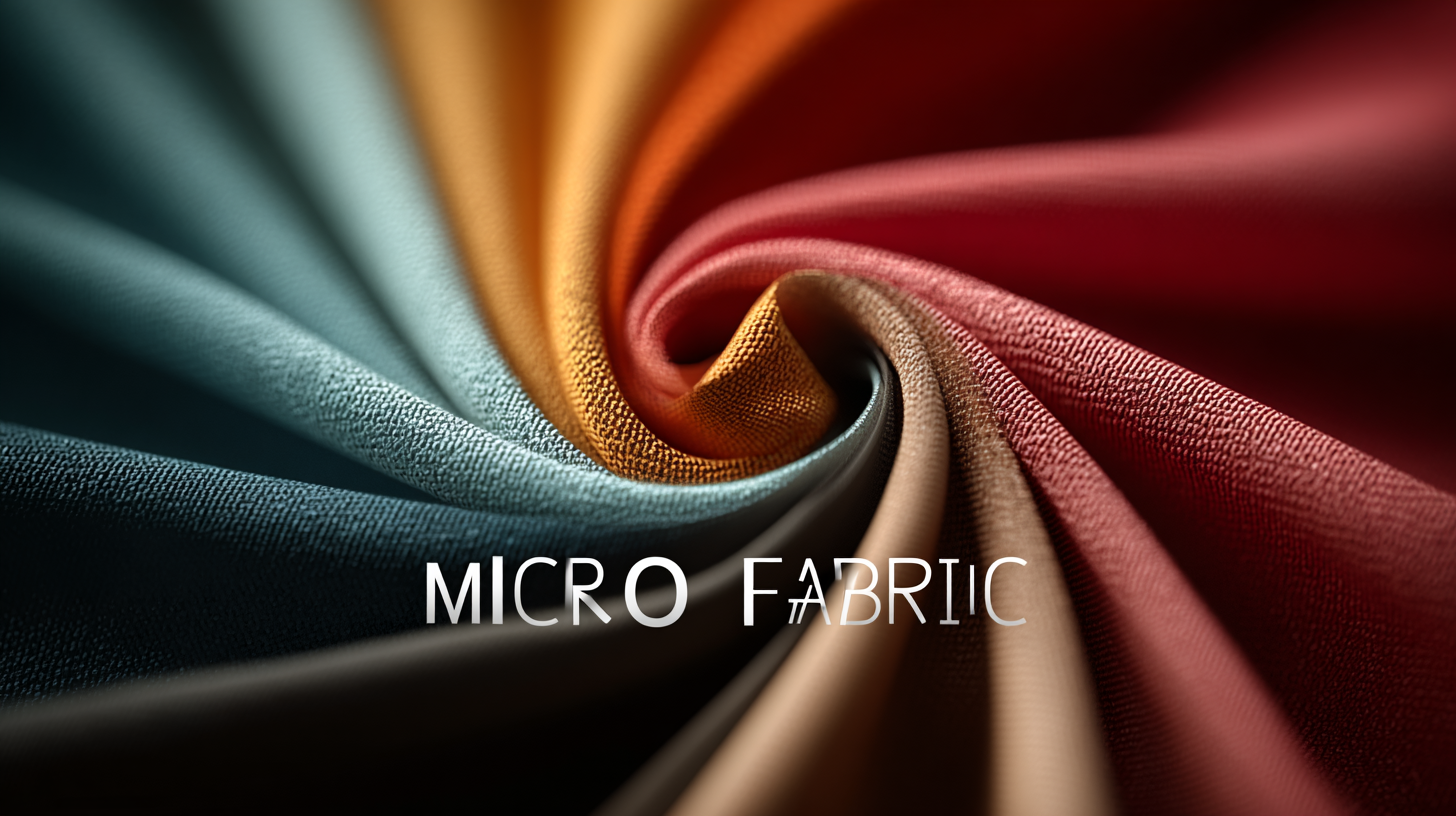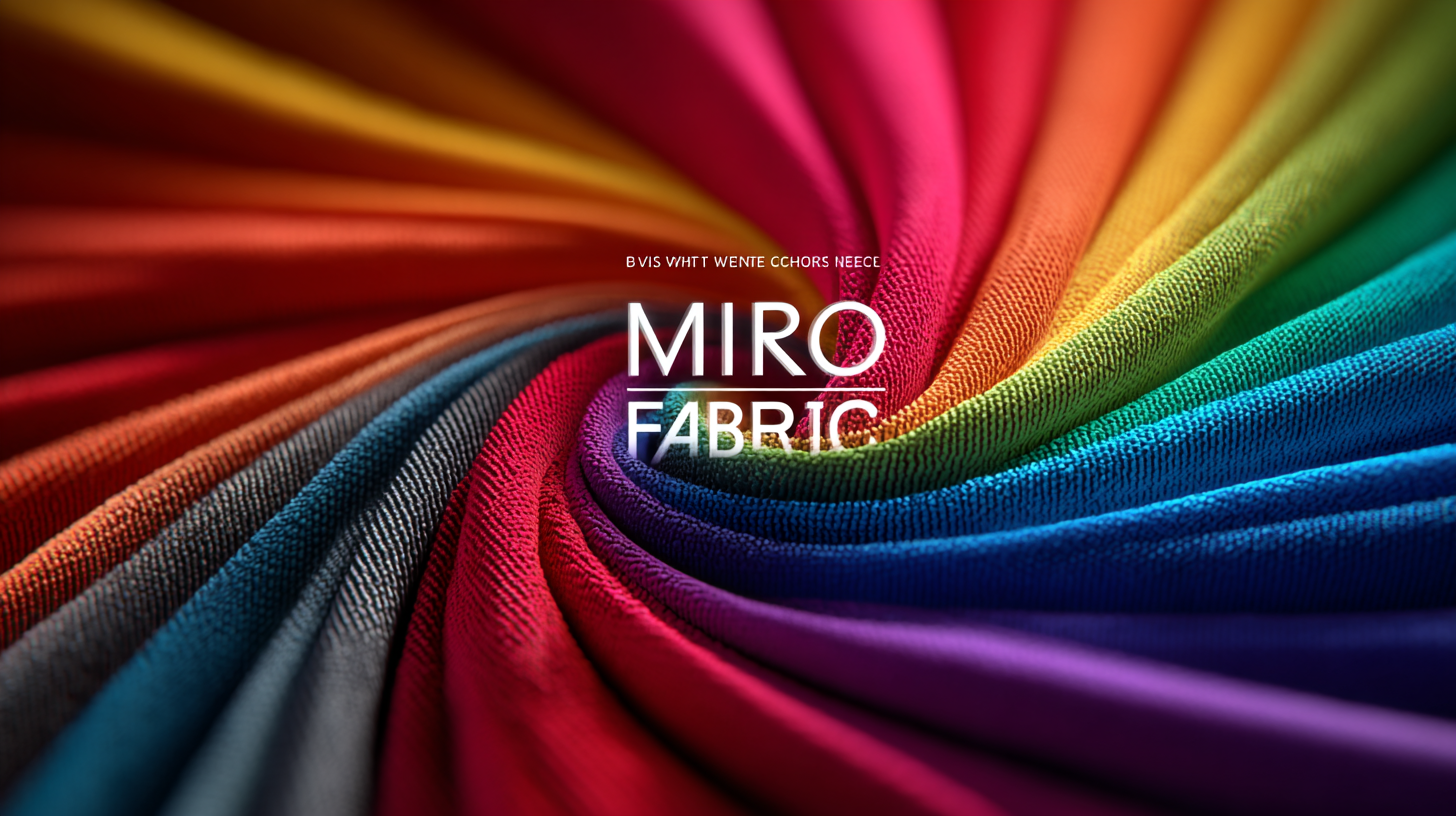In today's textile industry, the demand for high-quality materials has surged, particularly for fabrics that offer both comfort and durability.
 Micro Fabric has emerged as the ultimate choice due to its exceptional properties and versatility. According to a recent report from the Textile Research Journal, microfibers can be up to 100 times smaller than human hair, which allows them to trap dirt and moisture effectively, making them ideal for various applications from clothing to upholstery.
Furthermore, the global microfibre market is projected to reach $10 billion by 2025, growing at a CAGR of 10% per year, highlighting the increasing reliance on Micro Fabric across industries.
As businesses and consumers seek sustainable and high-performance options, finding a reputable supplier becomes paramount in ensuring quality and performance in their products.
Micro Fabric has emerged as the ultimate choice due to its exceptional properties and versatility. According to a recent report from the Textile Research Journal, microfibers can be up to 100 times smaller than human hair, which allows them to trap dirt and moisture effectively, making them ideal for various applications from clothing to upholstery.
Furthermore, the global microfibre market is projected to reach $10 billion by 2025, growing at a CAGR of 10% per year, highlighting the increasing reliance on Micro Fabric across industries.
As businesses and consumers seek sustainable and high-performance options, finding a reputable supplier becomes paramount in ensuring quality and performance in their products.
Micro fabric has garnered considerable attention for its exceptional softness and comfort, making it a top choice in various applications from fashion to home textiles. According to a report by the Textile Alliance, microfibers are approximately one-sixth the diameter of a human hair, which allows them to create a luxuriously soft texture that is highly desirable. This fine structure not only enhances the tactile experience but also contributes to breathability, making micro fabric perfect for clothing and upholstery that require both comfort and functionality.
In addition to its softness, micro fabric is also known for its exceptional durability. A study published in the Journal of Textile Science indicated that microfibers exhibit superior strength and resistance to wear compared to traditional fabrics. This combination of softness and strength is particularly appealing in everyday use, as it allows consumers to enjoy comfort without sacrificing longevity. Moreover, micro fabric is often hypoallergenic and resistant to water and stains, adding to its allure for those seeking a luxurious yet practical textile option.
When it comes to selecting fabrics for a variety of uses, durability and longevity are paramount considerations. Micro fabric distinguishes itself in this regard, offering a unique combination of resilience and comfort. This high-performance material is crafted with ultra-fine fibers that provide exceptional strength while remaining lightweight. Unlike traditional fabrics that may wear thin over time, micro fabric is engineered to withstand the rigors of daily use, making it an ideal choice for everything from home furnishings to outdoor gear.
Moreover, micro fabric is resistant to stains, water, and fading, which contributes significantly to its longevity. This means that items made from this material can maintain their appearance and functionality for years, even in challenging environments. The fabric's quick-drying nature and easy maintenance further enhance its appeal, allowing users to enjoy its benefits without the hassle of complex care routines. Whether you're looking for upholstery, clothing, or accessories, micro fabric ensures that your investment will endure, providing both aesthetic and practical benefits that set it apart from the competition.

When it comes to selecting materials for your projects, micro fabric stands out as an eco-friendly choice that combines sustainability with functionality. This advanced fabric is often made from recycled materials, reducing waste in landfills and minimizing the consumption of new resources. By opting for micro fabric, consumers can contribute to a circular economy, where textiles are reused and repurposed, thus promoting environmental stewardship.
Furthermore, micro fabric's lightweight and durable properties make it a practical option for a variety of applications, from upholstery to fashion. Its ability to repel stains and resist wear means that products made from micro fabric have a longer lifespan, resulting in less frequent replacements and reduced environmental impact over time. By choosing micro fabric, not only do you enjoy a product that looks great and performs well, but you also make a conscious decision to support eco-friendly practices that can lead to a healthier planet for future generations.
 Micro fabric has rapidly become a go-to material for a multitude of applications, showcasing its exceptional versatility. This innovative textile is not only lightweight and durable but also easily adaptable for various uses. From fashion to home décor, micro fabric can elevate the aesthetic appeal and functionality of products. It’s a favored choice in the manufacturing of upholstery, curtains, and clothing due to its soft texture and easy maintenance, allowing it to cater to different tastes and environments.
Micro fabric has rapidly become a go-to material for a multitude of applications, showcasing its exceptional versatility. This innovative textile is not only lightweight and durable but also easily adaptable for various uses. From fashion to home décor, micro fabric can elevate the aesthetic appeal and functionality of products. It’s a favored choice in the manufacturing of upholstery, curtains, and clothing due to its soft texture and easy maintenance, allowing it to cater to different tastes and environments.
Moreover, micro fabric’s ability to resist stains and repel water enhances its practicality, making it suitable for outdoor gear, sports apparel, and even travel accessories. The fabric's breathability and stretch contribute to comfort, proving beneficial in activewear and everyday clothing alike. As a result, consumers enjoy a wide range of options that meet their specific needs while benefiting from the durability and style that micro fabric offers. Its adaptability to various industries illustrates why it remains a top choice for those seeking high-quality textile solutions.
When it comes to choosing the best fabric for various applications, micro fabric stands out due to its effortless maintenance and care. According to a 2022 survey conducted by the Fabric Care Institute, over 70% of consumers prefer fabrics that can withstand frequent washing while retaining their quality. Micro fabric not only meets these requirements but also dries quickly and resists wrinkles, making it an ideal choice for busy households and commercial settings alike.
To keep micro fabric looking its best, consider these tips: first, always check the care label for specific instructions. Most micro fabrics can be washed in cold water; however, using a gentle cycle can further extend their lifespan. Secondly, avoid fabric softeners, as they can coat the fibers and diminish the fabric's breathability and moisture-wicking properties. Lastly, ensure that items made of micro fabric are dried at low heat or air-dried, which helps maintain their structure and vibrant appearance.
The durability of micro fabric is particularly notable in upholstery and garments, where it can resist fading and staining. Industry reports indicate that microfleece, a type of micro fabric, can maintain its original texture and color even after numerous washes. This resilience not only translates to long-term savings for consumers but also makes micro fabric a sustainable choice in an era when eco-friendliness is a priority for many.
| Reason | Description | Maintenance Level | Durability | Comfort |
|---|---|---|---|---|
| Stain Resistance | Micro fabric repels stains and is easy to clean. | Low | High | Soft |
| Maintenance Ease | Easy to maintain; typically machine washable. | Very Low | Very High | Comfortable |
| Hypoallergenic | Ideal for sensitive skin, reduces allergens. | Low | High | Soft and Gentle |
| Versatility | Suitable for various applications, from furniture to clothing. | Medium | Moderate | Comfortable |
| Color Retention | Holds color well, resists fading over time. | Low | High | Vibrant |
| Water Resistance | Naturally repels water, making spills manageable. | Low | High | Comfortable |
| Eco-Friendly Options | Some micro fabrics are made from recycled materials. | Medium | High | Comfortable |
